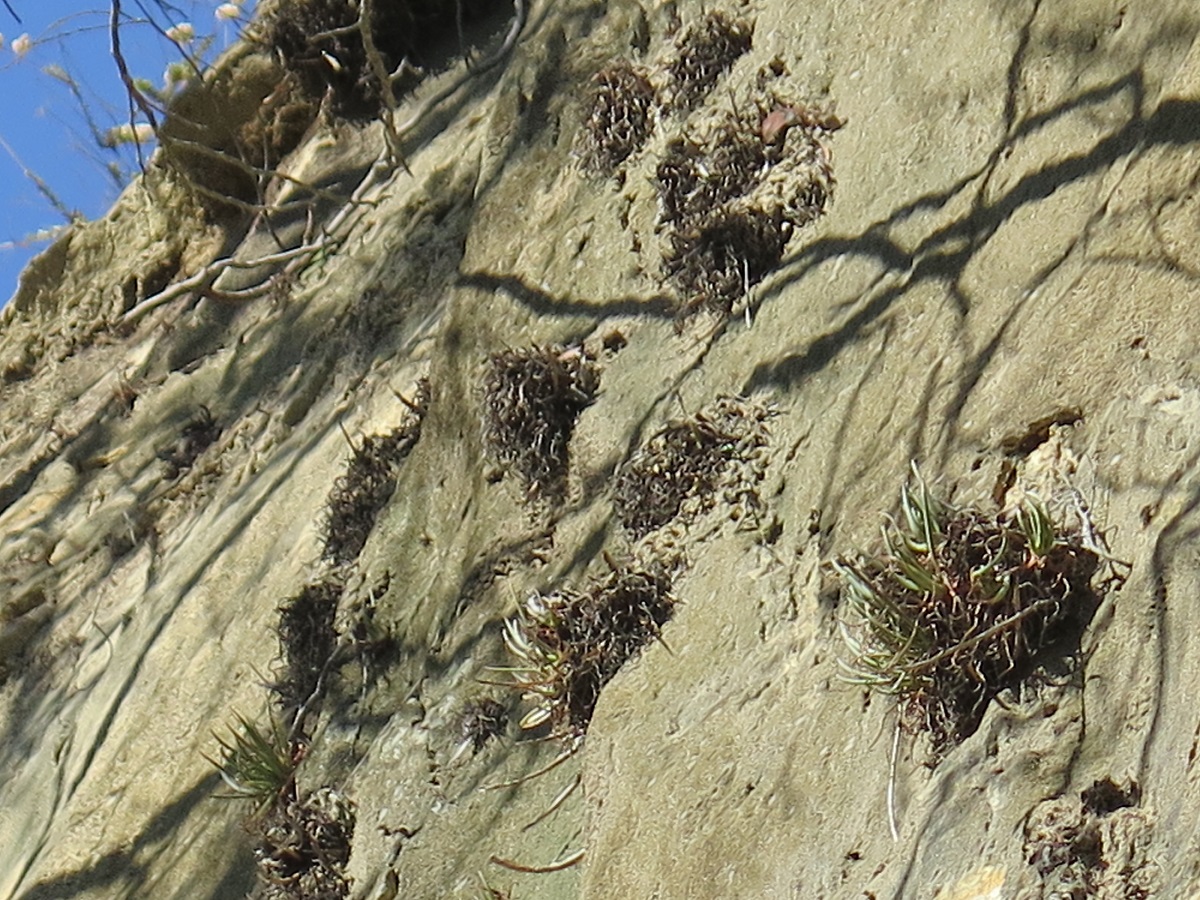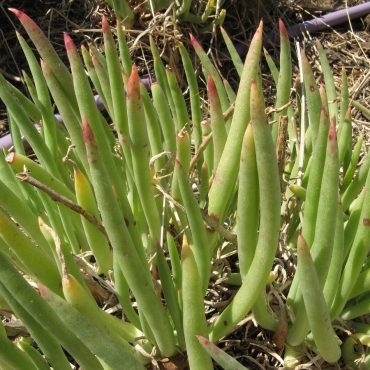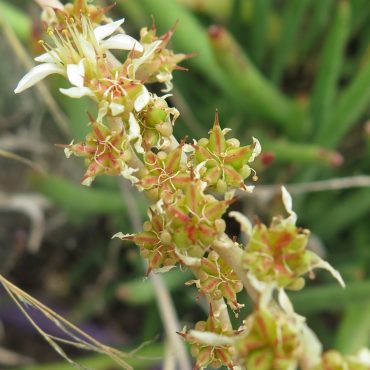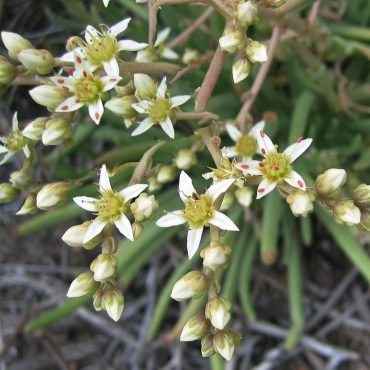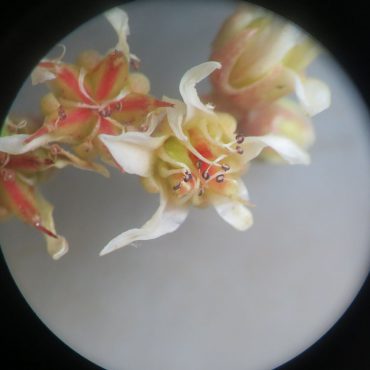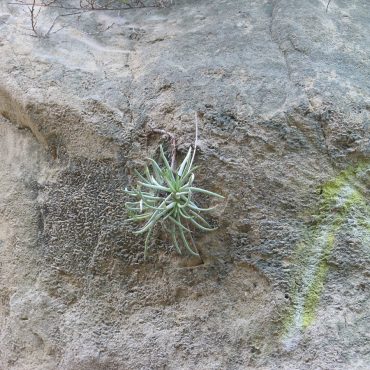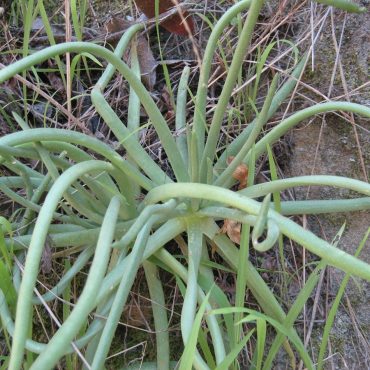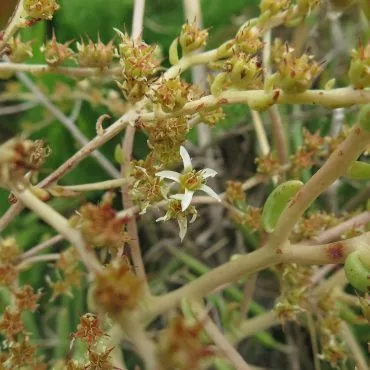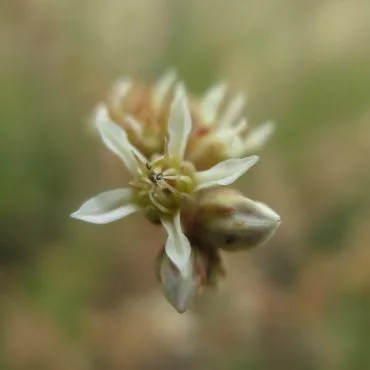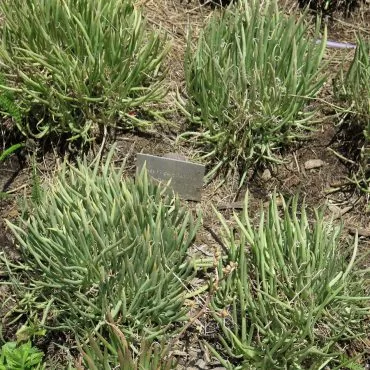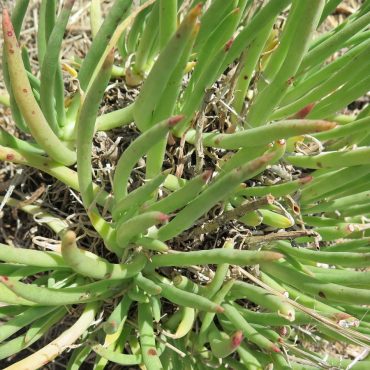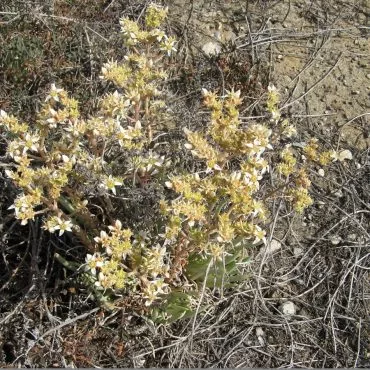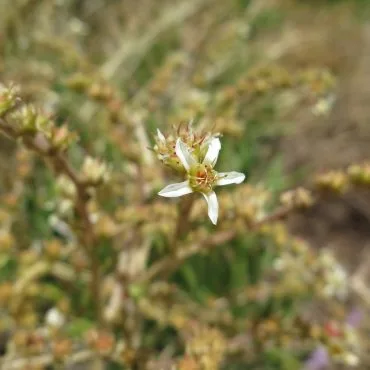Description
2,59
Ladies’-fingers is a low-growing, perennial plant with one or several short branching stems arising from a woody base. Each branch produces a rosette of fleshy green leaves, which together form a compact mound. The leaves are cylindrical, generally less than eight inches (20 cm) long, and covered with a light waxy coat. At the ends, they are acute and sometimes tinged reddish or withered into dry streamers. Dried leaves often cling to the lower part of the stem.
Flowers are held above the leaves on several open, branched peduncles. Three to 11 flowers occur on the terminal branchlet, on very short pedicels. The bisexual flowers have five fleshy sepals and five petals. The petals are white or cream colored, generally, less than 3/8 inch (1 cm) long, fused at their bases and spreading or somewhat reflexed from their midpoints. There are five pistils, each with a superior ovary tapering to a short style and minute stigma. The ovaries are fused at their bases, tear-drop-shaped with somewhat flattened sides, whitish, often tinged pink. There are ten stamens with reddish anthers; after maturity, anthers turn purple, and the stamens curl inward and persist on the developing fruits. Most flowers occur from May into July.1
The dry, one-chambered fruits are swollen, fused at their bases, and flared 45 degrees to 60 degrees away from vertical; aside from the asymmetry of the ends, a fruit resembles a segment of an orange; together, the five fruits look like an orange that has been opened for eating. Fruits split along the upper edges releasing many tiny seeds.

